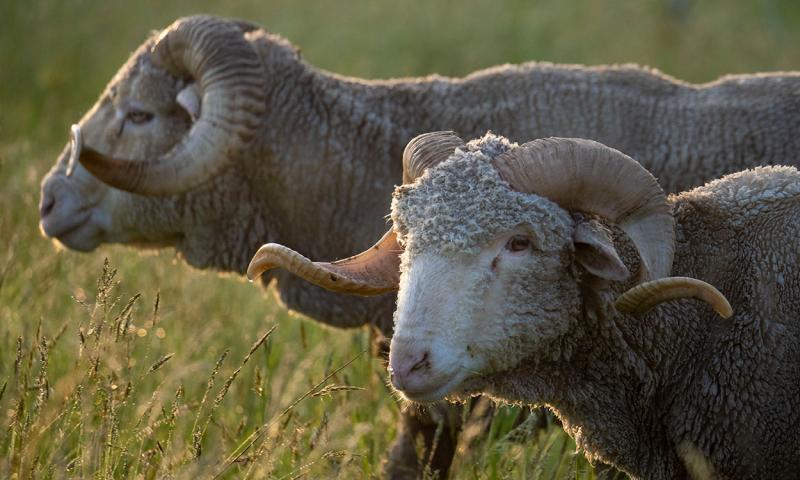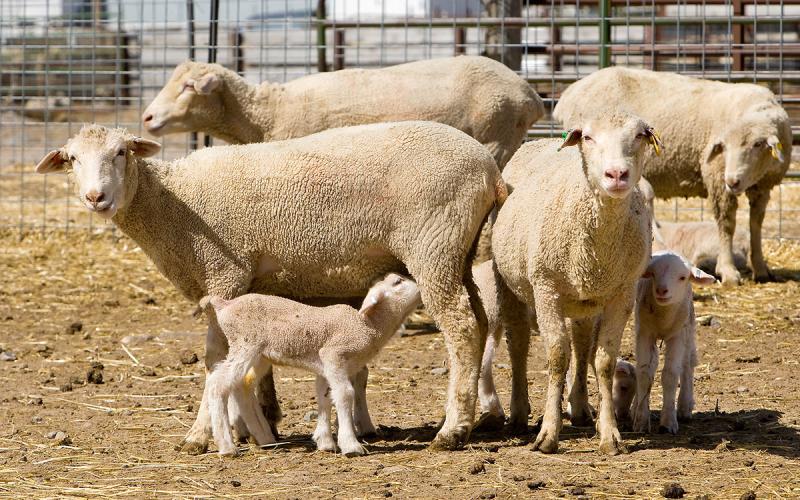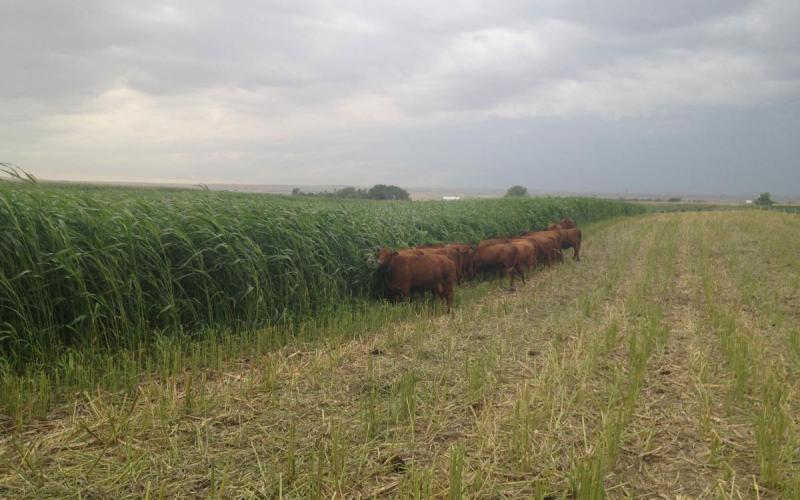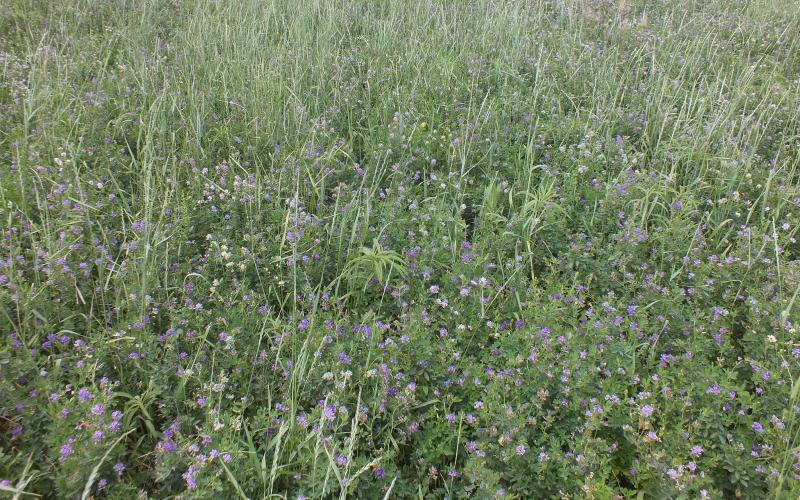
Written with contributions by Kelly Froehlich, former Assistant Professor & SDSU Extension Sheep and Goat Specialist.
Around breeding time, nutritional considerations tend to lean towards the ewes, but what about rams? Six to eight weeks prior to breeding, rams should be on an increased plane of nutrition and provided adequate vitamins and minerals. Profitability and progress are heavily dependent on the success of rams at breeding time, which is contingent to their nutritional status.
Dietary Energy
Boosting dietary energy (flushing) of ewes is a common strategy for increasing ovulation rates. Did you know that rams will exhibit greater reproductive response to elevated nutrition, also? When fed a higher energy diet, semen production and quality increases. The additional energy signals to the ram’s body to upsurge gonadotropin releasing hormone (abbreviated as GnRH), which begins a cascade of signals that initiate semen production and enlarges scrotal circumference (Figure 1).

Body Condition
When improving nutrition, remember rams should be “fit, not fat” going into breeding. They should be in a body condition score 3 (not too thin or obese) to adequately service ewes. Overly fat rams will not have a great reproductive response to increasing nutrition and tend to lack libido, which may affect their breeding success. Meanwhile, underfed rams will have lower semen quality and may be too weak to breed.
Nutritional Management
Spermatogenesis (the production of sperm) takes 6 to 8 weeks, therefore, nutritional management should begin at least 8 weeks prior to breeding. From maintenance to pre-breeding, rams require about a 10% increase in dry matter intake and energy and 18% increase in protein (Table 1). In most cases, this means that late-summer and fall pastures will fall short of ram requirements going into the breeding season. Similar to flushing, 0.5 to 1.0 pound of supplement (like corn or oats) will help stimulate sperm production and improve conception rates. At this time, breeding soundness exams should also be conducted to confirm ram fertility. If a ram does not pass a breeding soundness exam, he can be retested 30 to 60 days later. Continued supplementation or greater ram power may be needed during the breeding season if breeding on large pastures requires additional energy traveling to graze, drink, and cover ewes, and if using young growing rams.
|
(lbs.) |
of Body weight2 |
(lbs.) |
(TDN, lbs./day) |
(CP, lbs./day) |
|---|---|---|---|---|
|
|
||||
|
|
|
|
|
|
|
|
|
|
|
|
|
|
|
|
|
|
|
|
||||
|
|
|
|
|
|
|
|
|
|
|
|
|
|
|
|
|
|
1 Adapted from NRC, 2007
2 All values are displayed on a dry matter basis. Example to calculate the amount needed to feed: hay averages 90% DM, 221 lbs. ram requires 3.9 lbs. DMI ÷ 0.9 = 4.33 lbs. as fed
Vitamins and Minerals
Vitamins and minerals also play a critical role in sperm quality, particularly zinc, selenium, cobalt, and vitamin E. Although these trace minerals are required in lower amounts, they influence sperm motility and livability. Vitamin E and selenium work together to promote proper sperm production. Do you know the mineral status of what your sheep are consuming? Soil mineral concentration can serve as a starting point and can be determined through soil tests or estimated by online soil geochemistry maps. Some areas of South Dakota are marginally low in zinc and cobalt. Feed and forage sampling, however, serves as a more-accurate assessment of mineral shortfalls, as plant mineral concentration is not always reflective of soil minerals. Loose mineral should be provided to both ewes and rams before and throughout breeding season. Mineral blocks can be used as well, but sheep more readily consume loose mineral.
In Summary
In most cases, rams only work hard a couple months of the year, but their performance within that time is imperative. Most rams will lose 10 to 15% of their body weight during breeding (sometimes 25% in winter). Ensuring adequate ram condition and nutrition prior to breeding will allow rams to produce high-quality semen and have enough body condition to remain strong and healthy. Rams play a huge role in conception and, ultimately, operational success, so make sure you are supporting their productivity and longevity.


